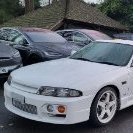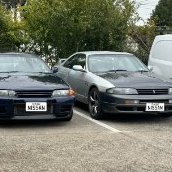How To Keep The Fuel Gauge Accurate When Replacing The Cluster -- 33
Announcements
-
Similar Content
-
Latest Posts
-
Ok i will get those 310mm. I found one but on a different site. This is the description on those...is it ok? Technical parameters: - Axle: front. - Disc type: ventilated. - Number of holes: 5. - Disc diameter: 310mm. - Total height with center: 54mm. - Thickness (new/min.): 30/28mm. - Designed for brake calipers manufacturer: Sumitomo.
-
Look for broken wire or bad connector at the motor. Might not be it, but is worth starting there, as it is easy.
-
By Bireley_32 · Posted
Hi everyone, I’m having an issue with my R32 GT-R. Sometimes, when the car goes over a bump or experiences some vibration, the 4WD warning light comes on the dashboard. When I check the code from the control unit in the trunk, it shows Code 19 – ETS Motor. However, everything seems to be working fine — if I turn off the engine and restart the car, the light goes away and everything functions normally. Has anyone experienced this before? Where should I start troubleshooting this issue? Thanks in advance! -
I'm back from the dyno - again! I went looking for someone who knew LS's and had a roller dyno, to see how it shaped up compared to everything else and confirm the powerband really is peaking where Mr Mamo says it should. TLDR: The dyno result I got this time definitely had the shape of how it feels on the road and finally 'makes sense'. Also we had a bit more time to play with timing on the dyno, it turns out the common practice in LS is to lower the timing around peak torque and restore it to max after. So given a car was on the dyno and mostly dialled in already, it was time for tweaking. Luis at APS is definitely knowledgable when it came to this and had overlays ready to go and was happy to share. If you map out your cylinder airmass you start seeing graphs that look a LOT like the engine's torque curve. The good thing also is if you map out your timing curve when you're avoiding knock... this curve very much looks like the inverse of the airmass curve. The result? Well it's another 10.7kw/14hp kw from where I drove it in at. Pretty much everywhere, too. As to how much this car actually makes in Hub Dyno numbers, American Dyno numbers, or Mainline dyno numbers, I say I don't know and it's gone up ~25kw since I started tinkering lol. It IS interesting how the shorter ratio gears I have aren't scaled right on this dyno - 6840RPM is 199KMH, not 175KMH. I have also seen other printouts here with cars with less mods at much higher "kmh" for their RPM due Commodores having 3.45's or longer (!) rear diff ratios maxing out 4th gear which is the 1:1 gear on the T56. Does this matter? No, not really. The real answer is go to the strip and see what it traps, but: I guess I should have gone last Sunday...
-







Recommended Posts
Create an account or sign in to comment
You need to be a member in order to leave a comment
Create an account
Sign up for a new account in our community. It's easy!
Register a new accountSign in
Already have an account? Sign in here.
Sign In Now